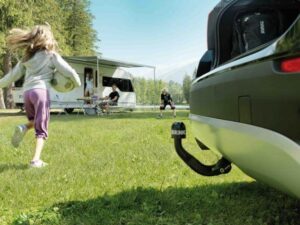For many, the Easter holidays represent that tipping point when they finally (and reluctantly) bid farewell to Summer and usually resign themselves to the proper onset of autumn. When you get back to the Highveld, the days are definitely shorter and the mornings are cooler…
But irrespective of where you’re going to or coming from, you want to arrive home with memories of beaches and sunshine. Not memories of a trailer abandoned in Harrismith due to a seized wheelbearing, or a budget-wrecking fine from the boys in blue for inoperative brake lights and indicators…
Says Mark Gutridge, Managing Director of Brink Towing Systems, the manufacturer, importer and distributor of Brink tow bars: “Most consumers take towing for granted and don’t think about it until the last moment, but proper preparation is the key to success. The reality is that you are more vulnerable when there’s a load behind you and that’s why it is doubly important to make sure that everything is absolutely 100 percent ship-shape.
“Start with the basics: tyre condition and pressures, wheel bearings, wiring and lighting, and then the actual trailer itself. But the other key factor is compatibility: the trailer needs to be of an appropriate size and towing attitude for your vehicle; and if it is too high at the towball or the weight of the trailer is greater than the towing vehicle, or the weight distribution is poor, then the rig will be unstable. The bottom line? Rather don’t tow if you can’t tow right.”
An increasing percentage of modern cars are fitted with systems that recognise the presence of a trailer and can make significant changes not only to driver aids such as stability control (altering parameters such as when and how ABS intervenes) but also things like how the cooling system works and how the transmission responds. For that reason, when an aftermarket tow bar is installed it is critically important that the wiring is expertly done too.
“CANbus systems, which link multiple electrical ‘nodes’ and allows them to communicate intelligently with each other in a simplified wiring loom, have also changed the way aftermarket accessories are added into a network,” explains Gutridge. “Aftermarket wiring harnesses for tow bars have become increasingly vehicle-specific and if a one-size-fits-all approach is taken then there is a possibility that some systems may remain dormant and the driver will not enjoy the benefits of the safety features fitted to the car. However, worst case scenario can include permanent damage to electronic and lighting hardware.”
Gutridge recommends that consumers pay as much attention to their wiring supplier as they do to their towbar supplier, adding that when a Brink tow bar is sold into the aftermarket, in the same box as the tow bar they correct wiring harness will be found.
Brink Towing Systems’ golden rules for towing include:
- The GVM (Gross Vehicle Mass) of the caravan may not exceed the Tare weight of the towing vehicle.
- Tyre pressure is critical: pay careful attention to manufacturer recommendations
- When the caravan is hitched onto the towing vehicle it should be level with the car, or better, slightly nose down.
- The vertical load, or weight ‘at the ball’ should never be more than 100 kilograms (the maximum legal limit). If necessary, rearrange the contents of the trailer/caravan to achieve this result.
- Adjust your headlights to take the trailer into account.
- Slow down…while there is no maximum towing speed in SA, find a speed that feels right
- Make sure that you have the appropriate licence to tow your trailer – a B licence only entitles you to tow a light trailer with a gross mass under 750 kilograms, and you need an EB licence to tow a gross combination mass (the combined tare weight of the tow vehicle and trailer/caravan) not exceeding 3 500 kilogram
Issued by Roadworx

